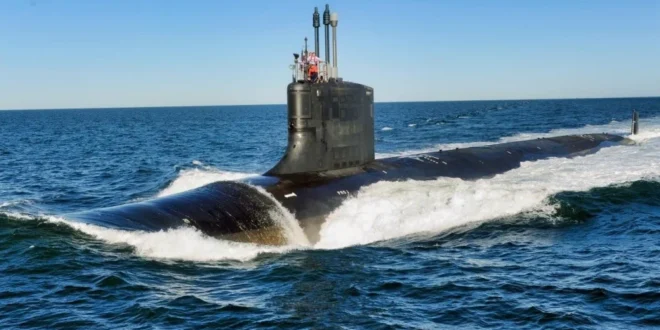Eric Lies
AUKUS deepens the United States’ relationships, strengthens collaboration, and primes it strategically for an increasingly volatile world.
America has long seen the value of collaborating with other nations to ensure a peaceful, prosperous, and free world. The AUKUS agreement between Australia, the United Kingdom, and the United States to share critical technology represents a revitalization and reimagining of this American tradition and is vital to the country’s continued security. Given the Chinese government’s increasingly aggressive nature in the Indo-Pacific, the free passage of goods and regional states’ ability to maintain their sovereignty are under threat. While China benefits from free trade, if it were to set the terms on which trade occurred, this would severely impact the freedom of Indo-Pacific states. The very fabric of the U.S.-ordered system is straining.
AUKUS gives the United States another tool to strengthen and maintain the system it has led since World War II and to minimize the costs and risks of doing so. Improving the three countries’ material readiness increases the cost of aggressive action within the Indo-Pacific, lowering the risk of such action being attempted in the first place. The American-led deterrence regime has allowed more than $2 million of trade between the region and the United States, with one-third of global trade passing through the region. These numbers don’t capture the fact that the highest quality technologies, from computer chips to automobiles, are manufactured by countries most at risk of China’s aggressive revanchism. A failure to reinforce the capacity to deter and respond to violent activities in the Indo-Pacific will lead to massive disruptions in supply lines, disruptions that would make the impact of COVID-19 pale in comparison. Without these trade routes, average Americans face the prospect of skyrocketing prices and inflation, a hit to the wallet they simply can’t afford, and potentially difficult choices between saving for their futures and putting food on the table.
Some policymakers in the United States question the value of American security commitments, arguing that money should be redirected toward domestic priorities, such as homeland defense or lowering overall government spending. Mira Rapp-Hooper argues this is a fundamental misunderstanding of the United States’ strategic position. Since World War II, the United States has relied on the alliance structure to practice “forward defense,” shifting potential conflicts as far from U.S. territory as possible. NATO, for example, has allowed for close coordination between allied countries that minimized strategic ambiguity and responded to potential conflicts at the source, allowing them to spread and potentially impact the United States closer to home. While the strategic circumstances have shifted since the Cold War, increased cooperation is still the best means to counter rising threats. Given the global nature of the United States’ interests and China’s rise to be a peer competitor in the Indo-Pacific, leveraging alliances within the region offsets the difference in attention the region receives from the United States and China.
Increasingly integrating the three AUKUS countries’ military-industrial complexes and collaborating on research and development will improve the economic opportunities available to the United States. Demand for U.S. expertise in submarine construction will exist for decades due to AUKUS Pillar One, but the opportunities to share and develop critical technology under Pillar Two can’t be ignored. The eight lines of effort contained in Pillar Two are wide-ranging and include, for example, artificial intelligence and autonomous vehicles, electronic warfare, and hypersonic missiles. Lowering trade barriers allows companies to access three separate military customers and their domestic markets. This subsequent market expansion has the potential to deliver even more growth than Pillar One, given the wide scope for cooperation. This says nothing of the increased ability for joint research and investigations that universities across the three countries can conduct and what economic developments that may lead to.
Ultimately, the strategic rationale for AUKUS is to build and maintain effective deterrence of Chinese revanchism through collaboration, which creates an environment conducive to trade, development, and prosperity. As China modernizes and increases the size of its forces, the United States’ position in the Indo-Pacific becomes increasingly difficult to maintain. The U.S.-backed system has facilitated growth and improved quality of life throughout the region many times over since the end of World War II, but with the rise of strategic competition between the United States and China, these benefits have become obscured.
AUKUS demonstrates that the United States will stay involved in the region and bolster its allies’ capabilities through cooperation. This does not mean the United States is getting nothing in return. The U.S.-led system has provided Americans access to high-quality and reasonably priced goods and services. It has given American businesses opportunities to expand overseas and support American jobs that otherwise would never have existed. It has kept the United States safe for seventy years and has cost far less than going alone would have. AUKUS deepens these relationships, strengthens collaboration, and primes the United States strategically for an increasingly volatile world. AUKUS helps the region. AUKUS helps Australia and the UK. AUKUS helps the United States. That’s why the United States needs AUKUS.
 Geostrategic Media Political Commentary, Analysis, Security, Defense
Geostrategic Media Political Commentary, Analysis, Security, Defense





